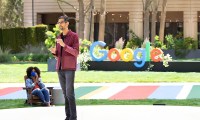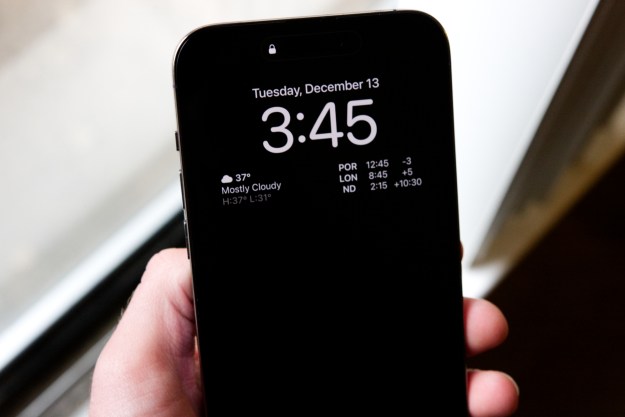At this moment in time, Apple owns the smartwatch space, and the Apple Watch’s status as the world’s bestselling watch is well-deserved. Google, on the other hand, has let Wear OS stagnate over the years, and while the dedicated companies that use Wear OS keep making great hardware, the software usually feels substandard.
Samsung makes the only true competitor to the Apple Watch. The Galaxy Watch 3’s fluid, well-designed Tizen software and innovative control system make it a winner, but it lacks Google apps and services. Neither Google nor Samsung can beat Apple on their own, but perhaps together they can?
That’s what was announced at Google I/O 2021. Google’s new “Wear” software is an exciting mash-up of Wear OS and Samsung’s Tizen, complete with Fitbit’s comprehensive health tech for good measure. Apple may not be shaking in its boots yet, but for the first time, it should be looking over its shoulder to see what’s coming.
More than just speed and battery life
Google said Wear is about three things: Faster performance, longer battery life, and a thriving developer community. Yes, speed and longer battery life will be welcome, but if you’ve ever used both Wear OS- and Tizen-powered smartwatches, you’ll know Samsung has a lot of far more important improvements to bring to this new software platform if it wants to truly compete with the Apple Watch.
We’re combining the best of @wearosbygoogle and @SamsungMobile Tizen into a unified wearable platform. ⌚ Apps will start faster, battery life will be longer and you'll have more choice than ever before, from devices to apps and watch faces. #GoogleIO pic.twitter.com/vj2aYZD81x
— Google (@Google) May 18, 2021
Samsung’s biggest advantage over Wear OS is the control system. The Galaxy Watch 3’s rotating bezel is a triumph of ergonomic design as it’s so easy to use on your wrist. Some Wear OS watches have rotating crowns, and while it’s a decent alternative to swiping the screen, it’s not always very comfortable to use, and not every company implements it on every watch.
The rotating bezel is tied to Tizen’s excellent, natural-to-use menu system. Compared to the endless screen swiping on a Wear OS watch, it’s quirky, eye-catching design feels modern and fun. It’s also really fast, something Google-powered smartwatches often struggle with, which is due to the baffling rarity of smartwatches with the Qualcomm Snapdragon 4100 Wear platform inside.
Tizen’s control system has always been crying out for more attention, as it’s vastly more user-friendly, much better designed, and far more natural to use than Wear OS. Everything that makes Tizen great is now potentially coming to Wear and a host of smartwatches made by companies that truly understand watch design.
What does Google bring?
However, Tizen suffers because it’s not a piece of Google software, and that means it doesn’t have Google Maps, it doesn’t natively use Google Pay, and Samsung has to actively encourage developers to make apps for it. Samsung’s problem with Tizen is the same one Huawei has with HarmonyOS and the App Gallery.

Google working together with Samsung cures this. All the familiar and widely used apps will be available, you won’t have to sign up for Samsung Pay if you don’t want to, and all the apps from the Google Play store that work with Wear OS will likely work with Wear, too. If they don’t, there’s plenty of motivation for developers to change the situation.
Then there’s Fitbit. Google acquired Fitbit for $2.1 billion, and this is the first time we’ve heard what it has planned for the fitness giant. The Apple Watch and the Apple Health platform is superb. It’s usable by casual exercisers along with the hardcore, and has thoughtful accessibility features like wheelchair movement tracking, as well as a comprehensive suite of sensors and health-related tools like environmental noise measurement and automatic handwash timing.
Fitbit has the data and the experience to challenge Apple Health, but it has never had the hardware design ability to really take it on. Samsung is equally capable when it comes to health tracking, and has innovated where Apple hasn’t with its blood pressure measurement feature on the Galaxy Watch 3. However, neither can come close to the simplicity or friendliness of tracking activity on the Apple Watch.

Google Fit is somewhere in-between. Fit’s design and usability is one of the few areas of Wear OS that Google has steadily updated and improved, but it’s let down by not really catering to highly motivated sports and fitness fans. Add Fitbit and Samsung into the Google Fit mix, and you’ve got a lot of potential for a far more extensive health-tracking platform that’s not tied to ugly hardware.
Good track record
Industry partnerships can go either way. For every Leica and Huawei, there are also marketing cash-ins like McLaren and OnePlus. The good thing is not only have Google and Samsung got plenty of motivation to succeed — both would love to blitz Apple — but the pair have recently successfully worked together on another innovative project, the Galaxy Fold series.
When Samsung revealed the updated Galaxy Fold after its difficult start in life, it did so with software co-designed with Google that helps Android work faster, more reliably, and more naturally on the new folding smartphone. The combined efforts made the release-ready Galaxy Fold a pleasure to use right from the start. It’s proof the two companies can work well together, have a shared vision of how to make a great software experience, and share a love of extremely cool hardware to show it off.
I can’t wait to see what Samsung and Google bring to smartwatches with Wear, because the potential here is absolutely huge. But I can’t help but smile at the effort that’s being put into it, because if notihng else, the new unified Wear platform underlines the might of the Apple Watch in the smartwatch space: Two of the world’s biggest names in tech feel the only way to take it down is to join forces.
Editors' Recommendations
- We may have just learned how Apple will compete with ChatGPT
- Look who just replaced Samsung as king of the global smartphone market
- This hidden Apple Watch feature is better than I could have imagined
- Apple and Google are teaming up to make tracking devices less creepy
- Check your Apple Card right now — you may have a crazy 10% cash-back promo




